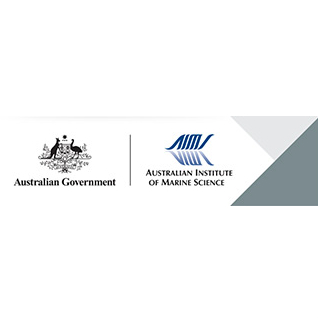Brief description
This metadata record describes vertical profile data from Conductivity Temperature and Depth (CTD) profilers collected through in situ monitoring by the Great Barrier Reef Marine Monitoring Program for Inshore Water Quality (MMP WQ). A full description of the MMP WQ and its associated datasets can be found in the parent metadata record linked above. Sea-Bird Electronics CTD profilers are used for vertical casts and are typically fitted with additional sensors to measure parameters such as fluorescence (a proxy for chlorophyll a concentration), turbidity, beam attenuation, dissolved oxygen concentration, and photosynthetically active radiation (downwelling light) sensors. Instrument models SBE 19plus and SBE 19plusV2 are used currently, while older records include data from SBE 25, SBE 25plus, and SBE 9plus instrument models. Annual calibrations of profilers are carried out in Sea-Bird Electronics laboratories in the USA. These calibration values are included within the instrument configuration file. Pre-trip CTD checks are carried out before each field trip, which include checking the physical status of the sensors and cables and battery voltage. Prior to conducting a cast, the CTD is secured to the hydrographic wire, tubing is removed to allow flush water to drain from the conductivity-temperature cell, and any protective caps are removed from the other sensors. The CTD is lowered into the water sitting ~3 m below the surface, and a three minute "soak" allows sensors to equilibrate and air bubbles to be flushed by the pump. The CTD is then raised to ~0.2 below the surface and the profile is commenced at a rate of 0.5 – 1 m s-1. The CTD is sent to near-bottom, ensuring it does not touch the seafloor, and retrieved to the surface. Casts are done on the sunny side of the boat to avoid the boat's shadow interfering with the measured light profiles. Data processing is conducted using Sea-Bird proprietary software and includes: conversion of raw instrumental records to measurement units, alignment, removal of ship roll, outlier removal, and bin averaging the down-cast at 1 m increments. Detailed procedures for data handling can be found in the MMP WQ's QA/QC Reports (see link below under Related Information). CTD data can be downloaded from the Australian Ocean Data Network THREDDS Data Server in netCDF or csv format (see link below under Data Downloads). Water chemistry measurements taken at the time of each CTD cast can be retrieved from the MMP WQ physico-chemical and nutrient database (see parent metadata record above). Water quality data are collected in conjunction with the Great Barrier Reef Marine Monitoring Program for Inshore Coral Reefs (see link below under Related Information). AIMS' full database of CTD profiles from all around northern Australia can be found attached to a separate metadata record (see link below under Related Information).Lineage
Maintenance and Update Frequency: asNeededNotes
CreditData were collected under the Great Barrier Reef Marine Monitoring Program for Inshore Water Quality. This program is a partnership between the Great Barrier Reef Marine Park Authority, the Australian Government, the Australian Institute of Marine Science, James Cook University, and the Cape York Water Partnership.
Modified: 17 10 2024
text: westlimit=145.20629882812503; southlimit=-23.65647470107573; eastlimit=151.710205078125; northlimit=-15.994995104875638
User Contributed Tags
Login to tag this record with meaningful keywords to make it easier to discover
Great Barrier Reef Marine Monitoring Program for Inshore Coral Reefs metadata page
uri :
https://apps.aims.gov.au/metadata/view/c30cfb2d-46be-4837-9733-9bb60489b65b![]()
AODN ncUrlList help documentation
uri :
https://help.aodn.org.au/web-services/ncurllist-service/![]()
Metadata record for AIMS Vertical Profiles Of Conductivity Temperature And Depth (CTD)
uri :
https://apps.aims.gov.au/metadata/view/9080e85b-d9a6-4001-b196-e21547d31653![]()
AODN OGC WFS help documentation
uri :
https://help.aodn.org.au/web-services/ogc-wfs/![]()
global : 2b2aa4e4-1368-49e0-8b25-1559ee297854
- global : acad78d1-e235-45e6-8f27-0a00184e2ca9


